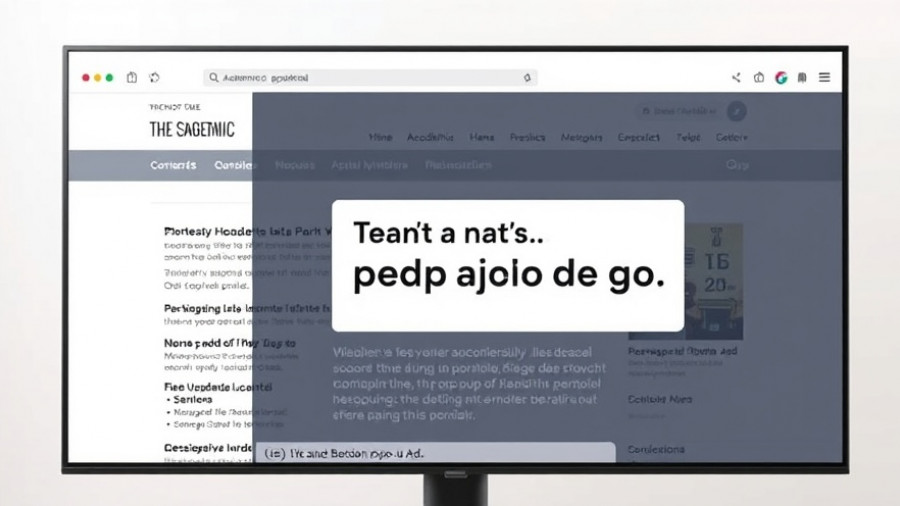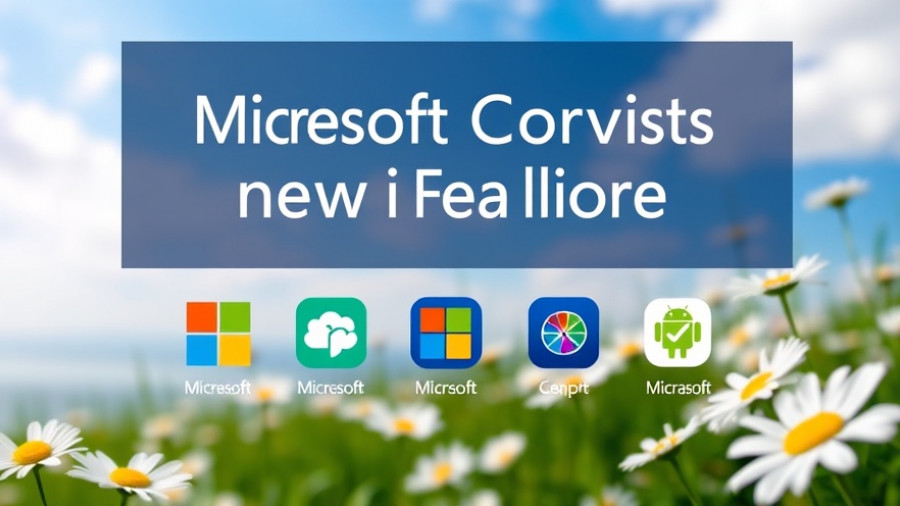
Microsoft Revamps AI with GPT-5: What to Expect
In a groundbreaking leap for artificial intelligence, Microsoft has announced the availability of GPT-5 across its Copilot and core development tools. This marks a significant evolution not just for Microsoft’s software suite but for the AI landscape as a whole. With innovations continuously reshaping how businesses operate, it is essential to understand the implications of this advanced AI integration.
Unleashing the Power of Copilot AI
Copilot, Microsoft’s AI-driven assistant, has gained traction for enhancing productivity in various applications, including Word and Excel. The integration of GPT-5 promises smarter suggestions and streamlined workflows. By making routine tasks more efficient, Copilot allows developers and businesses to focus on complex problems rather than mundane tasks.
Future Predictions: The Impact of GPT-5 on Various Industries
Industry experts speculate that GPT-5 could usher in a new era for sectors like healthcare, finance, and education. For example, in healthcare, AI models could analyze patient data in real-time, providing accurate diagnostics and treatment recommendations. In finance, GPT-5’s capabilities could enhance risk analysis, helping organizations make data-driven decisions rapidly.
Contrasting Views: Is Microsoft’s Approach Sustainable?
While many celebrate Microsoft's initiatives, there are concerns about data privacy and the ethical implications of AI. Critics argue that without stringent regulations, deploying AI technology like GPT-5 could lead to misuse or biases. Thus, while the technology offers immense benefits, it also necessitates careful consideration of ethical guidelines and regulatory standards.
The Unique Value of Understanding AI Advancements
For professionals in tech and beyond, understanding the dynamics of AI developments, particularly ones as significant as GPT-5, is crucial. Not only does staying informed allow for better strategic planning, but it also opens the door to innovations that can propel an organization ahead of its competitors. Knowledge of these advancements empowers stakeholders to make informed decisions regarding investments and product developments.
Actionable Insights: How to Leverage GPT-5 for Your Organization
Organizations looking to capitalize on GPT-5’s capabilities should start by assessing their current workflows. Identifying repetitive tasks can help determine where AI can provide significant improvements. Training teams on using Copilot effectively, combined with understanding the nuances of GPT-5, ensures they are not just using the tools but maximizing their potential impact.
In conclusion, Microsoft’s deployment of GPT-5 across its platforms represents a pivotal moment in the evolution of AI technologies. As organizations adapt to these changes, it becomes imperative to stay informed and agile. Now is the time for companies to explore how these advancements can enhance their operational effectiveness. Embracing AI not as a trend but as a foundational element is essential for long-term success in the competitive tech landscape.
 Add Row
Add Row  Add
Add 




Write A Comment